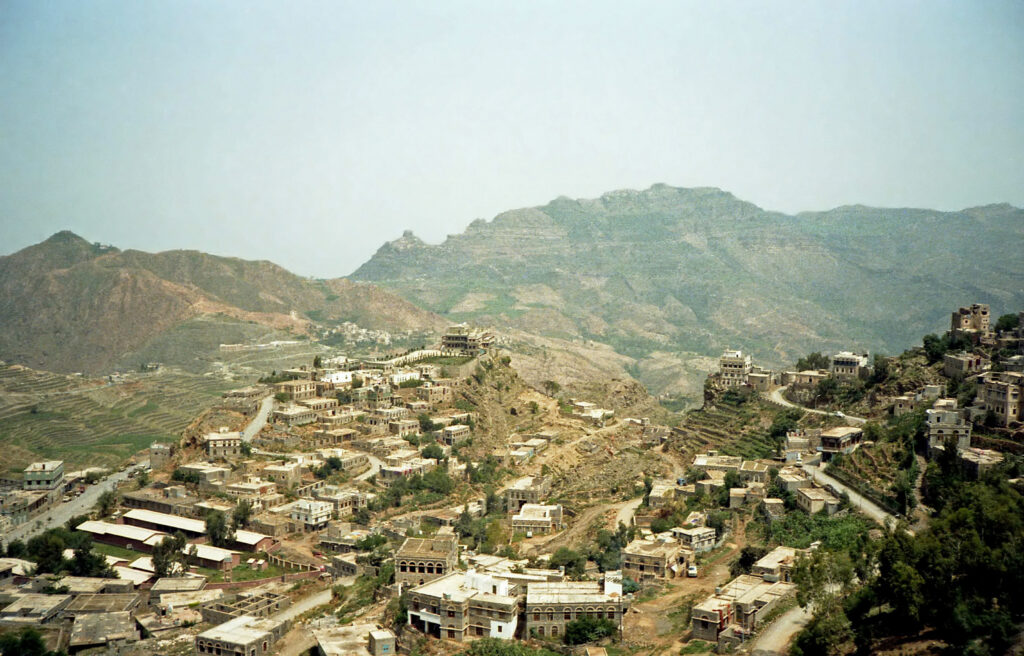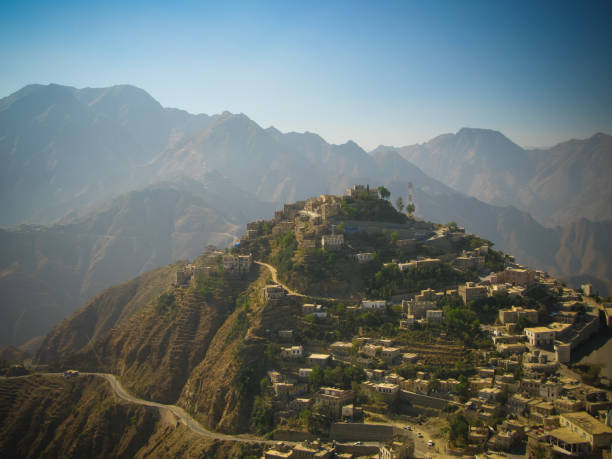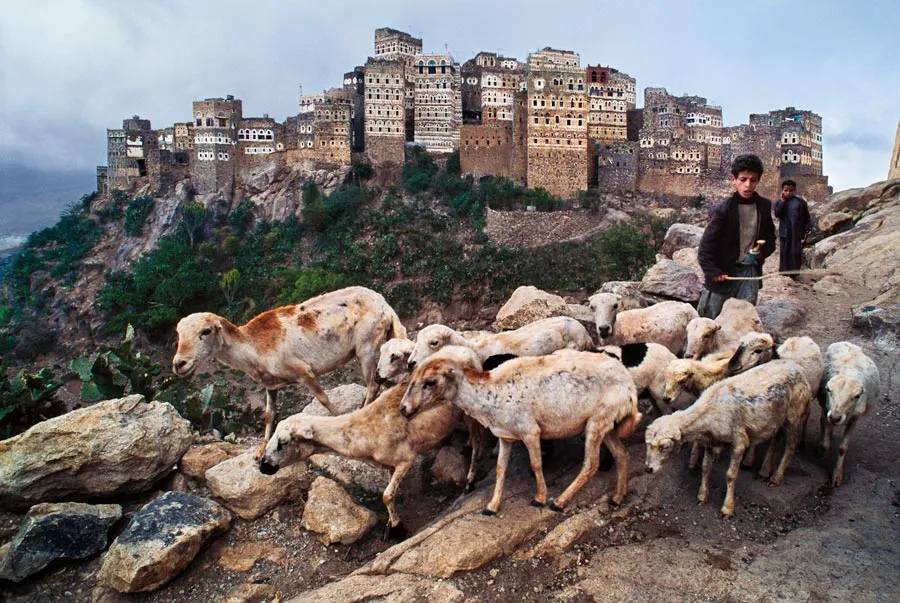The Scenic Mountainous Road to Hajjah – Yemen's Fortress City
By: Habeeb Salloum/Arab America Contributing Writer

“Hajjah! You must go to Hajjah”, was the suggestion every Yemeni would make when I talked about my plans for exploring their country. “You must see its surrounding countryside. It’s the most magnificent mountain scenery in the world.” My friend Yahya who I had travelled with from the U.S., was insistent when urging me to visit the mountain city -127 km (79 MI) from Sana’a, the country’s capital.
Heeding his advice, I decided to make a trip to that much talked about town. Now, early in the morning, we were on our way. Near the end of the 50 km (31 MI) long and 10 km (6 MI) wide Sana’a basin, our driver stopped to buy some fruit by the side of the road. I wanted to take photos of the young men selling their produce, but all refused. Was it their dread of the evil eye or the fear of tourists showing the poverty of their country? I could not tell. Our driver, Ahmad, said that there is an oral tradition that the Qur’an banned the taking of photos. When I suggested that there was no photo taking at the time of the Prophet, he just shrugged his shoulders.
After passing through the village of Ma’mar, Ahmad stopped to buy his daily qat – leaves of a plant which are chewed for leisure by about 90% of Yemeni men and 10% of women. Even though non-addictive, the habit is very costly for the average person – from $1. to $60. a day, depending on the quality. The daily chew pushes many families into poverty and to satisfy demand over a third of the cultivable land is set aside for this plant, called by many ‘the evil of the Yemen’.

Soon we were ascending barren hills overshadowing valleys spotted with greenery. The beautiful view of the Kawkaban and Thulla Mountains to the left held our attention for a while before we descended into the Al-Bawn basin. At ‘Amran, whose old clay walls are still intact, we turned left through a new suburb of the city.
After stopping to photograph the old town, we began our ascent upwards. The mud and stone homes of the countryside, set on the slopes and atop the mountains, seemingly melting into the landscape, reminded me of the Kasrs and Kasbahs of southern Morocco. Historians who assert that the Berbers emigrated to North Africa from the Arabian Peninsula in the mist of history have a point. Besides their dwellings, the characteristic of the Berbers in North African Atlas Mountains strongly indicate that their ancestors once called Yemen home.
As we wound our way up to near the peaks, I was entranced with the view hundreds of feet below. Every valley was filled with greenery and the endless grain and vegetable terraces, which in places, led to the very top of the mountains. All around, the sheer drops, deep valleys, terraced fields and fortress-like villages created a fantastic picture postcard of beauty.
Near the citadel of Kahlan, perched like an eagle’s nest on a summit of a mountain 2,400 m (7,872 FT) above sea level, we stopped at the side of the Chinese built highway, a remarkable feat of engineering cut from sheer-solid rock, to survey the scene. Steep cliffs tumbled down to intensively cultivated fields which produce two or three crops a year. In the distance below, villages built at the peaks of hills appeared as if they were placed there by magic. Above, picturesque, terraced fields reached to the walls of the fortress.
Before the Chinese constructed the Hajjah highway, it was almost impossible to travel through this astounding part of the Yemen. The road must have opened a new world to the inhabitants of these sky-reaching mountains.
From Kahlan, we wound our way downward until we reached the Sharaz Valley, about 1,000 m (3,280 FT) above sea level. Crossing a bridge spanning the Sharaz River, we climbed upwards past coffee fields – fast being replaced by qat – until we were in Hajjah, 1,700 m (5,576 FT) high.

Built atop a number of mountain peaks, Hajjah’s strategic location made it a prize, fiercely fought over through the centuries. It played an important role during many critical periods in Yemeni history, once serving as the capital of the Zaydi state. When the Imam Yahia was assassinated in 1948, his son Ahmad was placed in power by the tribes in the Hajjah region. As payment for their services, he allowed them to sack Sana’a. This event was never forgotten by the inhabitants of that city who, thereafter, worked for the downfall of the Imamate – achieved by the success of the 1962 revolution.
We made our way through town to the Turkish built al-Qahira citadel, situated atop the highest peak in the city. Our intention was to see its famous large underground prison where the Imams used to confine their adversaries, often in cruel conditions. It is said that the walls of the prison cells are filled with scribbling, inspired by the suffering of the inmates. However, we were not able to examine these writings. The fortress had just been made a military post, banned to the public.
Nevertheless, our ascent had not been in vain. From the walls of this imposing stronghold, the countless villages and hamlets spread on the summits and sides of the surrounding towering hills was a spectacular sight. These small towns located amid endless terraces, green valleys and striking mountains gave the countryside an aura of majesty. Set in the core of the Yemeni highlands, this fortress-city, which is today the capital of Hajjah province, seemed like a fairy tale town growing out of the clouds. It was well worth the journey just to savour the scene.


